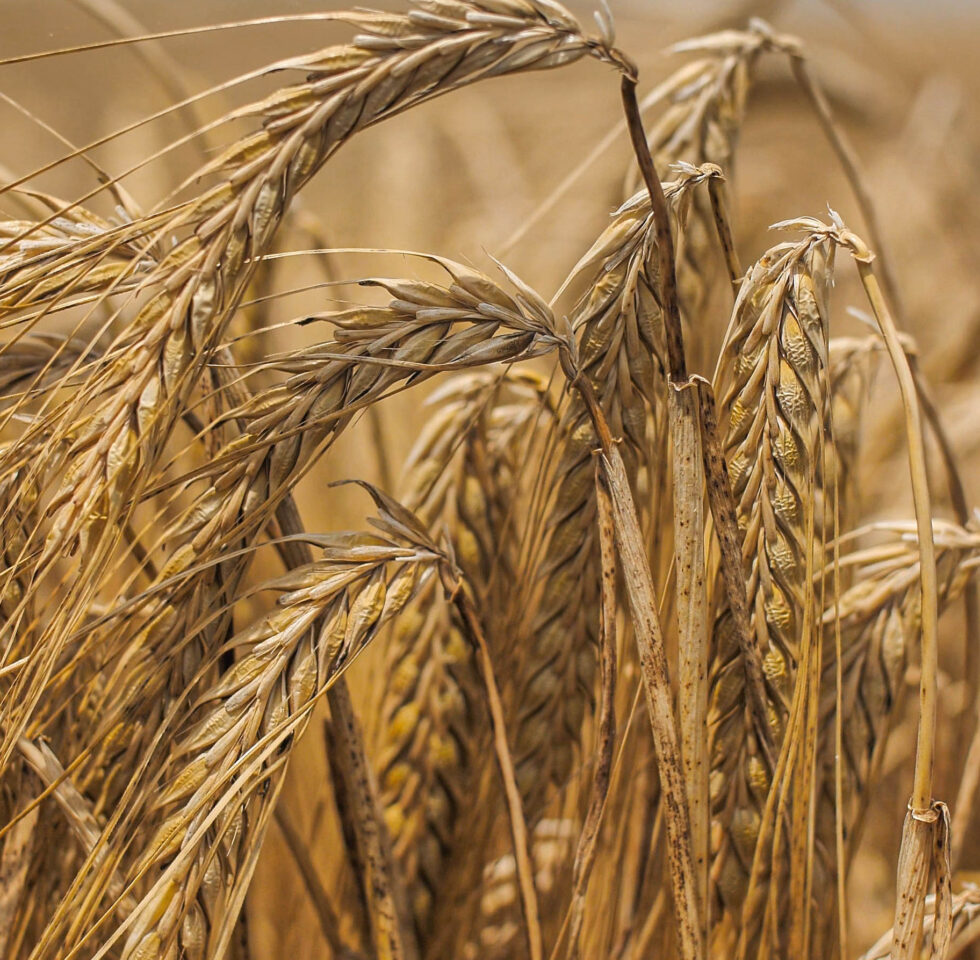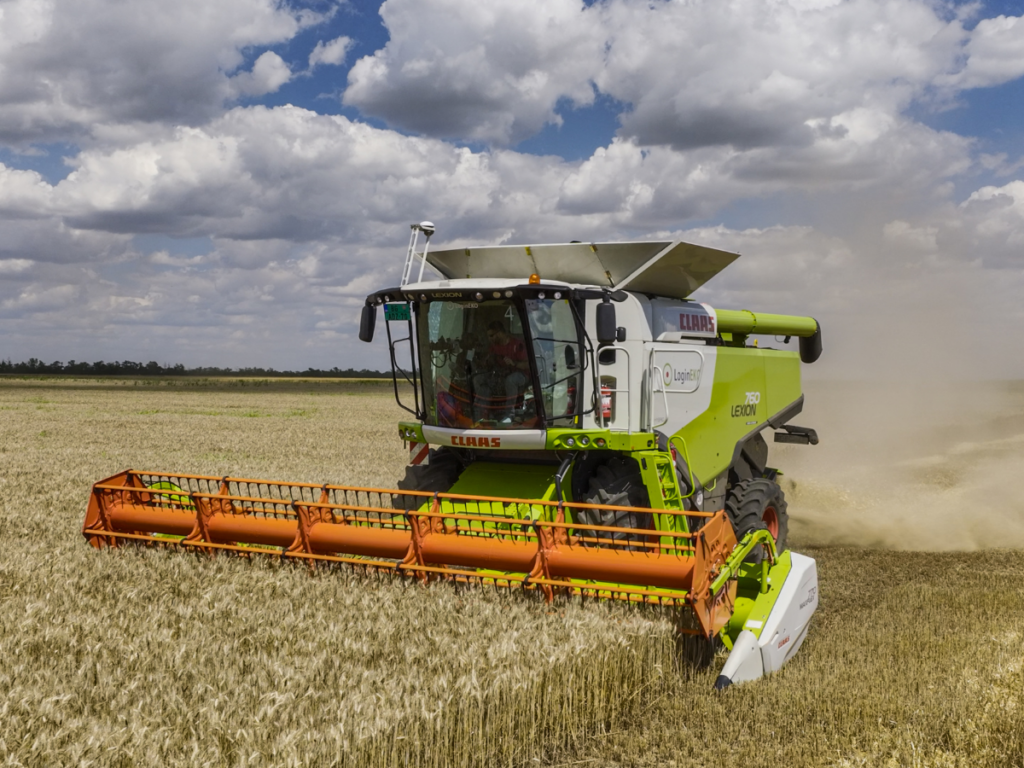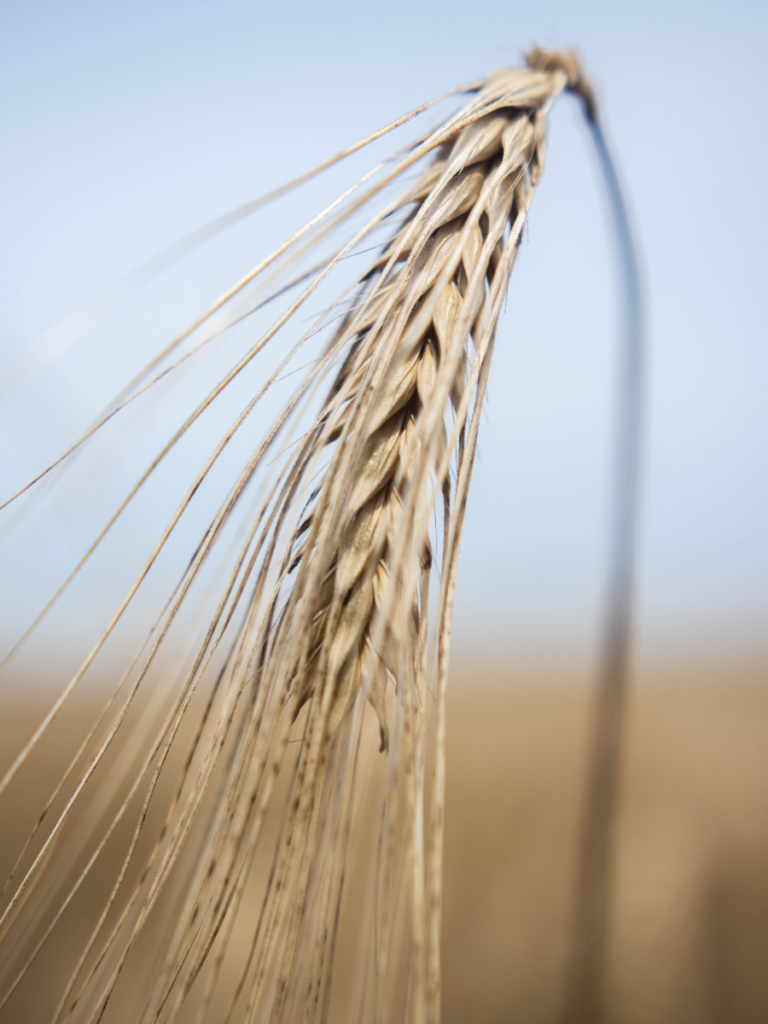How We Tackle Weeds in Organic Chickpeas
June 23, 2025We’re back in the field with our chickpea cultivation series! See how we tackle weeds after emergence using inter-row cultivation.
Read articleExplore how barley contributes to organic farming, weed control, nitrogen management, disease prevention, and nutrient cycling. Learn how strategic crop sequencing enhances efficiency and reduces external inputs.

Malting winter barley is an important component of the LoginEKO crop rotation, particularly due to the livestock-free nature of this innovative farming system. Barley fits well into organic farming systems due to its nutritional value and minimal demands on soil conditions. With reduced nitrogen demands compared to other crops, barley offers advantages for organic farming. To produce high-quality malt, the protein content in the barley seed should not exceed 12%, with an optimal range of 10.5–12.0%.
Furthermore, barley provides additional benefits in organic farming systems, because it establishes rapidly in the fall and can out-compete weeds, providing good weed control. Integrated pest management strategies can effectively manage regional diseases and insects that affect barley. Its strong autumn development and early maturation provide an excellent way of avoiding droughts in spring and early summer, which guarantees more secure yields in dry years.
The significance of nitrogen cannot be overstated in organic farming systems, particularly in the context of livestock-free models. Nitrogen plays a vital role in supporting crop growth, optimizing nutrient uptake, and promoting overall productivity. It is important to note that the available nitrogen resources are finite and must be utilized carefully. Meticulous management practices enable farmers to maximize nitrogen utilization, minimizing waste, and ensuring sustainable agricultural practices. This deliberate approach to nitrogen management is crucial for the long-term health and productivity of organic farming systems.
Careful planning of crop sequencing is of paramount importance in maximizing the economic and sustainable utilization of mineralized nitrogen, with the ultimate goal of striving for self-reliance and reducing dependence on external nitrogen inputs. By strategically designing the sequence of crops in a rotation, farmers can effectively capitalize on the nitrogen released from organic matter mineralization and previous crop residues. This meticulous approach not only enhances the long-term ecological balance of the farming system, but also contributes to the economic viability of the operation by reducing input costs and fostering greater self-sufficiency in nitrogen management.
A well-thought-out crop sequence allows for the optimization of nitrogen availability throughout the growing season. Crops with high nitrogen demands, such as wheat, can be strategically placed after nitrogen-fixing legumes like peas or alfalfa/clover. These leguminous crops form symbiotic relationships with nitrogen-fixing bacteria, adding a new value into the soil, and enriching the soil by converting atmospheric nitrogen into plant-available forms.
In the LoginEKO rotation, sunflower is incorporated as the third crop following winter wheat, capitalizing on its remarkable attributes. The deep and robust root system of sunflowers excels at scavenging and extracting available nitrogen and essential nutrients, particularly from the deeper layers of the soil. This strategic integration of sunflower enhances nutrient utilization and optimizes the overall nutrient cycle within the farming system.

Alternating sunflower with wheat, a winter and spring sown crop, a dense and row crop strategically disrupts the natural weed development cycle, and specifically targets weed species associated with winter cereals, such as wild mustard. This purposeful rotation design effectively suppresses weed growth, and fosters sustainable weed management practices. As a result, weed accumulation and overall weed pressure are significantly reduced, contributing to lower field weediness and maintaining nitrogen balance. By minimizing weed competition, the available nitrogen resources can be fully utilized by the cultivated crop, and maximizes the growth potential and yield.

Additionally, sunflowers play a critical role in disease management within the rotation. By alternating sunflower with winter wheat, the rotation disrupts pathogen transfer, particularly addressing concerns related to fusarium blight. Sunflower placement between two cereal crops acts as a natural barrier, interrupting the disease cycle and reducing the risk of pathogen buildup in the soil. This proactive disease management strategy helps safeguard subsequent cereal crops by minimizing pathogen transmission, contributing to the overall health and productivity of the rotation.
After sunflower harvest, it is essential to promptly chop the crop residues into pieces no longer than 5–7 cm. Subsequently, the soil is prepared using a short disc harrow, working at a slight diagonal angle relative to the row direction, to a depth minimum of 15 cm. In the conditions of heavy clay soil in Banat, it is often necessary to make two passes to fully incorporate the crop residues into the soil and ensure that the seedbed is adequately fragmented to facilitate optimal seed placement at the appropriate depth (3–4 cm).
By sowing malting barley after sunflower, conditions are created to maintain the desired protein content in the barley seeds, avoiding exceeding the crucial threshold of 12% protein content. The typical yield of malting barley sown after sunflower ranges from 3–4 tons per hectare. In scenarios where the objective is to produce barley grain for human consumption, specifically for purposes such as flakes or porridge, the crop sequence would be distinctly modified. In this context, barley would assume the subsequent position following pea, maximizing the utilization of nitrogen provided by the pea, with the aim of achieving a higher protein content (>12%). Consequently, the revised crop sequence would adopt the order of pea-barley-sunflower.

By implementing a carefully planned crop sequence, farmers can maximize the utilization of mineralized nitrogen, minimizing costs associated with synthetic nitrogen fertilizers while promoting environmental sustainability. This approach fosters efficient nutrient cycling, reduces nitrogen runoff into water bodies, and mitigates the risk of nitrogen pollution, ultimately contributing to the long-term viability and resilience of organic farming systems.
We’re back in the field with our chickpea cultivation series! See how we tackle weeds after emergence using inter-row cultivation.
Read articleTwo days, three farms, one shared goal: growing hemp more sustainably. Here’s what we learned and shared during our tour of Prekmurje.
Read articleChickpeas offer great potential for organic farming. Join us as we walk you through the essential steps of chickpea cultivation, starting with seedbed preparation.
Read article